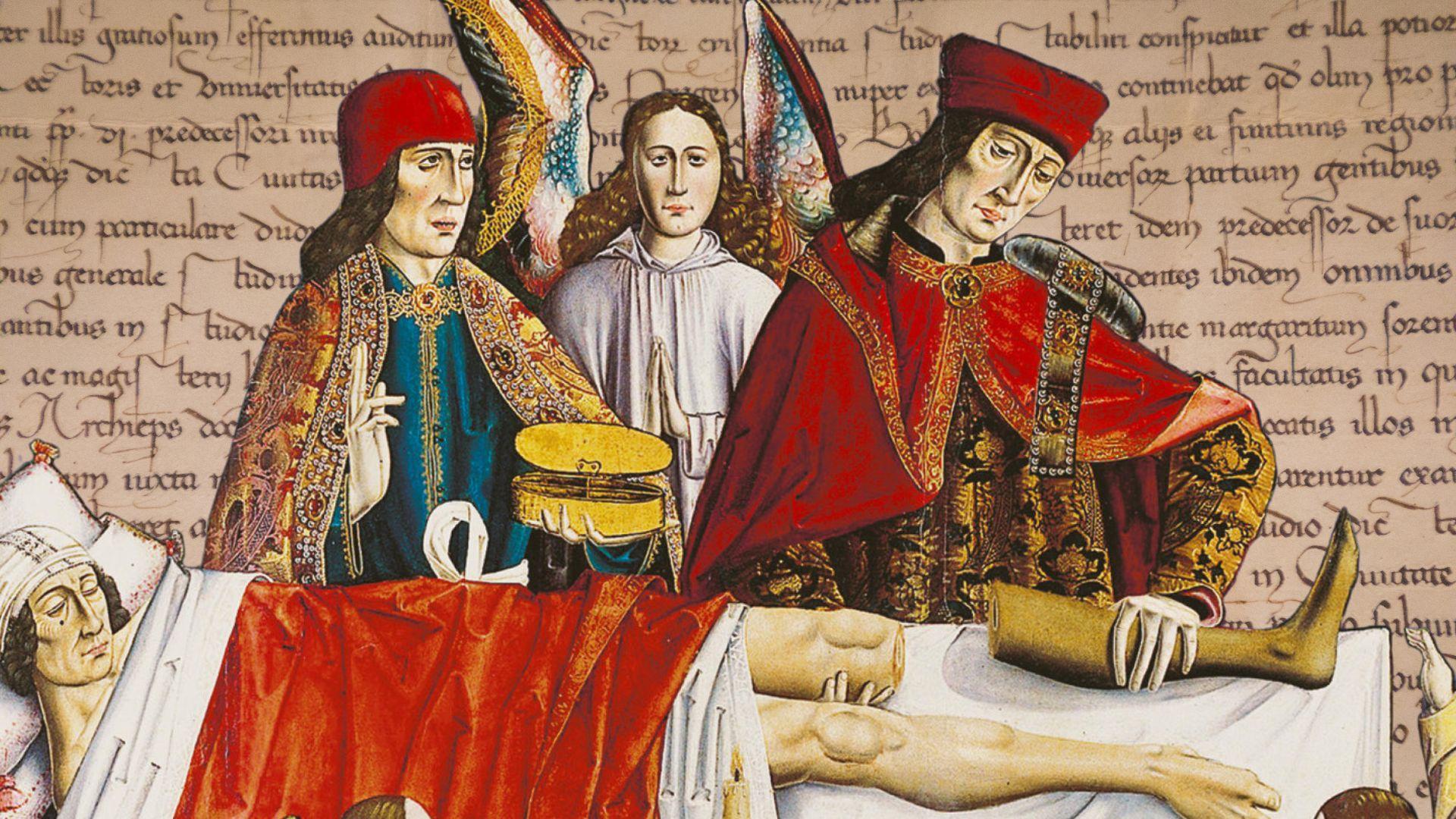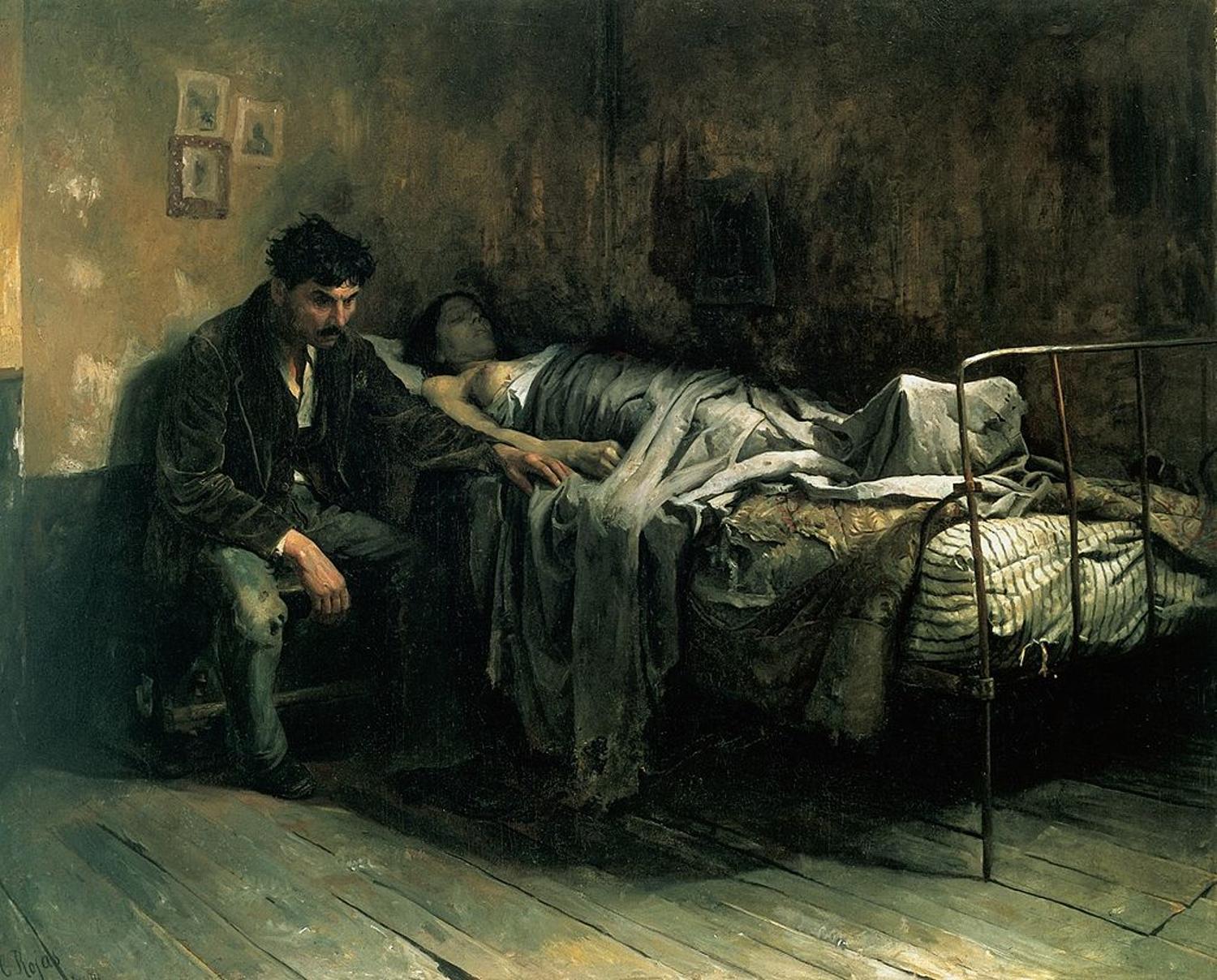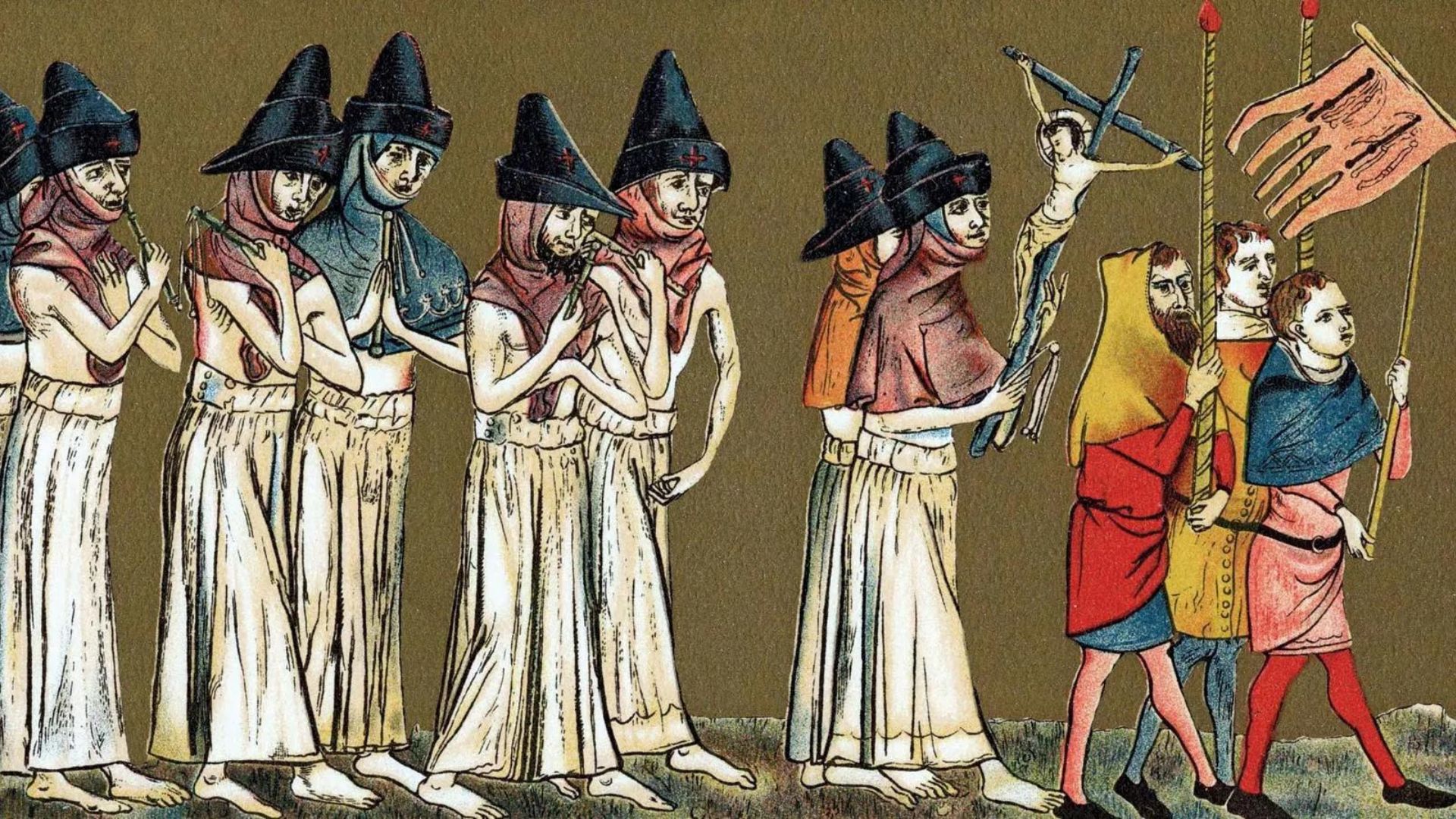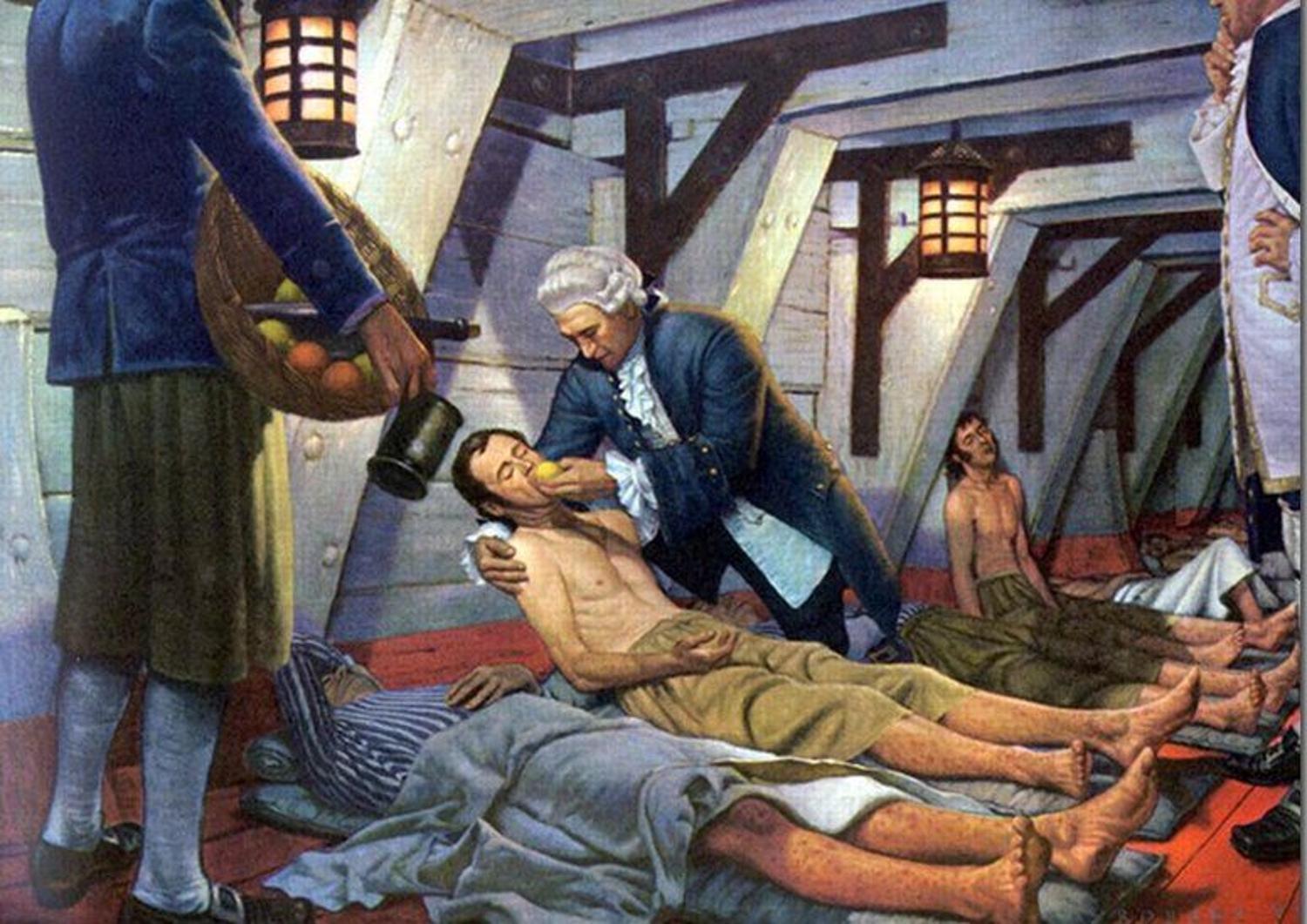The Middle Ages, also known as the Medieval Period, is certainly well known for dramatic economic and urban growth, but it was also filled with horrific diseases.
While modern medicine has drastically improved our treatment of disease, several of the harrowing diseases of the Medieval Period are still considered threats today. Let’s find out what they are.
Medicine in the Medieval Period

One of the most interesting aspects of the Medieval Period was how its people understood and handled medicine. While many advancements were made, medicine almost regressed.
According to a paper published by the National Library of Medicine, “Medicine became steeped in superstition… in this period, there was no tradition of scientific medicine, and observations went hand in hand with spiritual and religious influences.” Therefore, when illnesses presented, they were almost never cured.
Mumps: Incurable and Deadly

Mumps was an incredibly common disease during the Middle Ages. While it presents most often in children, the viral disease is extremely contagious and, left untreated, can be fatal.
Exactly 1,400 years after the first recorded case, a mumps vaccine was finally developed in 1967. Fortunately, the vast majority of children around the world now receive this vaccine as infants. However, the CDC still reports hundreds of cases of mumps every year, mostly in children who did not receive the vaccine.
Polio: Almost Undetectable Symptoms

Researchers understand that Poliovirus was present during the Middle Ages, but the first recorded example of the disease wasn’t transcribed until the 1860s. Before that time, they likely misunderstood the symptoms and called the disease by another name.
One of the reasons why Polio is infrequently mentioned throughout history is because it is so challenging to diagnose since the symptoms are minimal until paralysis sets in or the patient suddenly dies. Today, while there is a vaccine for Polio, several hundred people still contract the disease every year.
Tuberculosis: 10.6 Million People Still Suffer Today

Tuberculosis, or TB, is a bacterial infection that attacks the lungs and respiratory tract. In the Middle Ages, it was known as the “king’s evil” and spread like wildfire through the population in Europe and around the world.
TB is still a prevalent disease in the modern world. Tuberculosis can be prevented and cured, but delayed diagnosis can have fatal results. While 10.6 million suffered from TB in 2021, the disease killed 1.6 million, making it the 13th leading cause of death worldwide.
Rubella: Passed Down From Mother to Child

Rubella, which is now known as measles, is a contagious viral infection best known for igniting an aggressive red rash. As an adult, this disease can cause mild or even no symptoms, but it can be fatal in infants.
Because babies are most commonly infected by their mothers during birth, it’s exceptionally important that women are vaccinated before giving birth. While the majority of women around the world are vaccinated, some are not, and there are still 110,000 babies born with rubella every year.
Whooping Cough: Thousands of Young Children Still Die Every Year

Whooping cough was first recorded in 1190, and for almost the next 800 years, millions of people were affected by this potentially fatal and highly contagious respiratory tract infection.
In 1906, they finally developed a vaccine for the disease. However, there are still around 24.1 million cases of whooping cough and around 161,000 deaths every year. Most of whom are children under the age of five.
Leprosy: Fewer and Fewer People Are Developing This Dangerous Disease

Leprosy is one of the most well-known diseases of all time, as it was mentioned several times in the New Testament of the Christian Bible when Jesus Christ healed men who had been infected with the incurable disease.
In the 1940s, they finally found a cure for the disease, and since then, the number of people suffering from the horrific disease has decreased substantially. However, there are still around 250,000 people living with leprosy today.
Bubonic Plague: Black Death Is Still Alive Today

When one thinks of the Medieval Period, often, the Bubonic Plague comes to mind. Most often called the “Black Death,” this disease killed an almost unbelievable 25 to 50 million people from 1346 to 1353.
However, many don’t know that the Bubonic Plague is still alive today. The CDC reports a couple of dozen cases every year, but luckily, there are now ample treatments to fight the disease, and very few people lose their lives.
Scurvy: Make Sure to Take Your Vitamin C

Scurvy is a condition caused by a severe lack of vitamin C. It can appear in people who do not consume enough fresh fruit and vegetables. It was extremely common in the Medieval Period, especially for sailors. Because they didn’t have access to fresh produce for months, scurvy killed more than two million sailors during the 16th and 17th centuries alone.
Scurvy is not nearly as fatal as it was then, but the disease still exists. It’s still extremely important to ensure you consume sufficient vitamin C to protect yourself from this dangerous condition.
Smallpox: Medieval Disease to Be Completely Eradicated

Although medicine has advanced exponentially since the Medieval Period, very few diseases have been completely eradicated. But fortunately, smallpox has made that shortlist.
Smallpox was terrifyingly contagious and killed millions of people around the world during the Middle Ages. However, it was completely eradicated in 1980, and not a single case has appeared since.
Modern Medicine Has Made a World of Difference

It’s important to understand that while these eight diseases still exist, they are far less concerning than they once were. Now, we have vaccines, pharmaceuticals, and doctors who understand the science behind disease, which makes all the difference.
Although it’s still important to get the proper vaccinations, live a healthy life, and avoid those with contagious diseases. If the worst does happen and you contract one of the illnesses from the Middle Ages, you will likely be just fine.








































